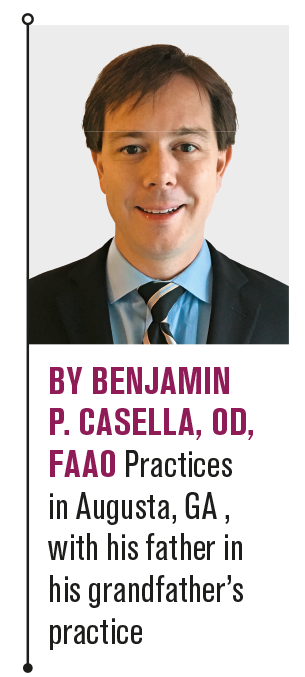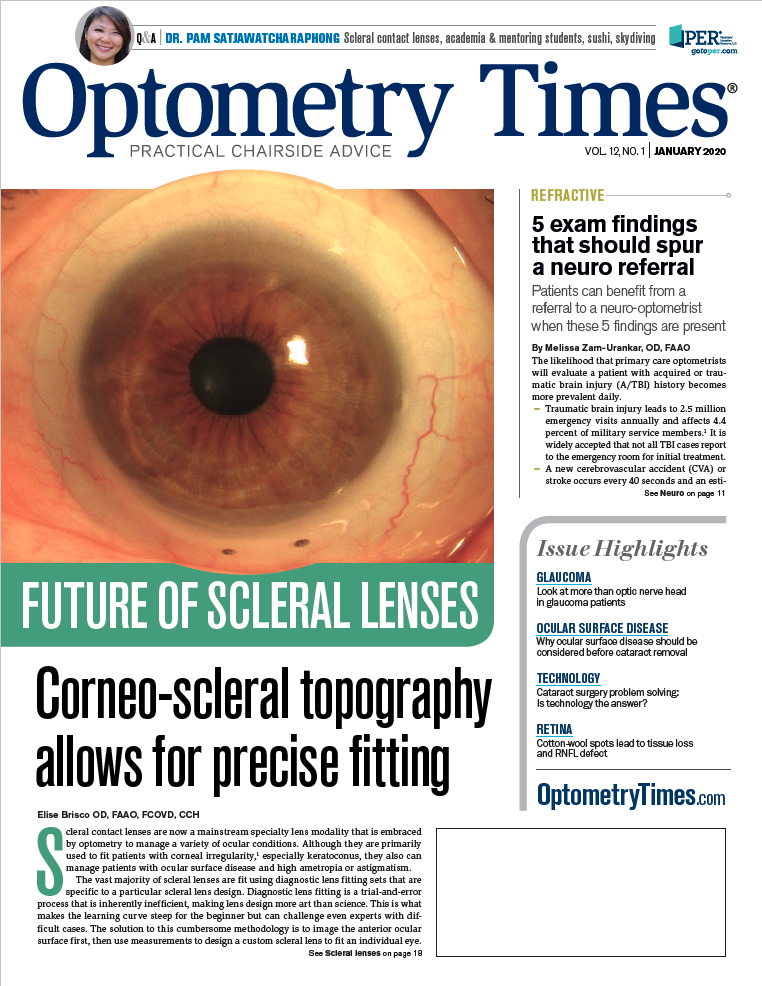Sights are set on perfect vision in 2020


I used to show more patients the 20/15 line during a refraction. I’m not sure when I stopped doing that as much-or why. At any rate, most of my refractions stop at 20/20 these days. Every now and then, I get that guy who wants to see the 20/10 line to make sure he’s the finely tuned machine he claimed he was on his patient history form.
Maybe I’m just a little more tired. For example, I used to jump at the chance to correct patients who (for some reason in a rather braggadocious fashion) would tell me that they’re legally blind without their glasses. I also used to jump at the chance to correct people who were deadset on the notion that they were farsighted because they couldn’t see far away. Don’t even get me started with those patients who said they’ve never seen well since they had their eyes dilated 17 years ago. I suppose I’m not motivated to debate such points any more. However, in 2020, things are going to change.
More by Dr. Casella: Giving thanks, optometry style
Yes, this is that cute editorial that makes a pun with reference to the year 2020. You knew it was coming, didn’t you?
Why not push our patients to 20/15? It would probably take another 30 seconds (time which I can certainly find). People come to us because they want to see well, right? Few patients want to know why they added or gave up a 0.25 D of refractive error over the last year. They just want their best vision. With respect to ocular disease, few glaucoma patients want to know how many microns of retinal nerve fiber they have left. They just want their best vision for as long as they shall live.
Let us not lose sight of the foundations from whence we came. Vision science is-and has traditionally been-a defining attribute of optometry which separates us and makes us exceptionally special to healthcare. Let us also not lose sight of the fact that optometry would have never come into existence without a product: glasses. So, in the year 2020-pun intended-I’m going to focus on vision as much as I do disease. These aspects of patient care should have never been separated in my mind to begin with, and I’m sorry that they are from time to time.
I’m going to use the year 2020 as a catalyst to push my patients to 20/15 and beyond. I likely need to set aside another minute or two per patient in order to reach this goal, and that is not a bad thing.
Not a bad New Year’s resolution, I suppose. Since I’m not joining a gym, I should be able to carve out the time.
More by Dr. Casella: Be leery of large optic cups when screening for pediatric glaucoma

Newsletter
Want more insights like this? Subscribe to Optometry Times and get clinical pearls and practice tips delivered straight to your inbox.